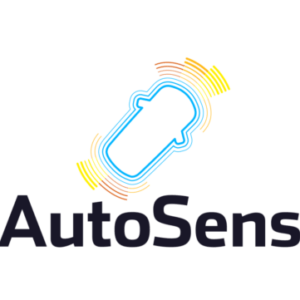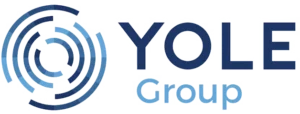Speaker announced for InCabin this June
Pierrick Boulay
Senior Analyst –
Automotive Semiconductor
Yole Group
About Pierrick Boulay
Pierrick Boulay is Senior Technology & Market Analyst, Automotive Semiconductor at Yole Group. He works in the fields of solid-state lighting and lighting systems, carrying out technical, economic, and marketing analyses. In addition, he leads the automotive activities within the company.
Pierrick has authored several reports and custom analyses on topics such as automotive lighting, LiDAR, sensing for ADAS vehicles, and VCSELs.
As vehicles become more intelligent and software-driven, the architecture behind them must evolve. In this Speaker Spotlight, Pierrick Boulay, Senior Analyst at Yole Group, previews his InCabin USA 2025 session.
From performance to scalability, see below where Pierrick breaks down the opportunities and hurdles ahead for in-cabin tech and beyond…
1. The transition from ECUs to domain controllers is a significant shift in automotive electronics. What are the key drivers behind this change, and how do chiplets enhance the capabilities of software-defined vehicles?
One of the goals of this transition is to simplify vehicle electronics by centralizing control, making software easier and reducing costs. Wiring harness is also one of the heaviest parts in cars. As the trend is to reduce the weight of cars, reducing the length of wire harness (and its complexity at the same time) will contribute to this goal. With cars embedding more sensors for advanced features like NOA or eyes-off driving, more data will be generated, and this new architecture offers the opportunity to reduce latency and enable faster sensor fusion.
Chiplets could enhance the capabilities of software-defined vehicle by offering customizable, scalable hardware that could support advanced features such as AI and handle the ever-increasing computing demands. Think chiplets like Lego bricks, it allows mixing and matching different blocks in a single package. Therefore, it could increase the speed of innovation cycles. Instead of re-designing a monolithic SoC, manufacturers could only upgrade only key parts of the chiplet.
2. While chiplets offer flexibility and scalability, they also present challenges in areas like power management, thermal efficiency, and standardization. What are the biggest hurdles the industry faces in adopting chiplets for automotive applications?
Let me continue with the Lego bricks analogy. If Lego bricks can be assembled, it is because they follow the same standard. In chiplets, there is a lack of universal interconnect standards that are slowing down integration and ecosystem growth. Other challenges are related to power and thermal management. Advanced packaging techniques are used, creating localized heat zones that could be difficult to manage.
Other challenges would be related to functional safety as automotive semiconductors must meet ISO 26262 standards. With vehicle lifespans around 10-15 years under harsh conditions (temperature, humidity, vibrations), chiplets must ensure long-term reliability. Finally, the chiplet ecosystem is only emerging and it requires partners related to IP, packaging, testing and more. All the supply chain must be consolidated.
3. Infotainment, driver monitoring, and personalized cabin experiences rely on increasingly complex compute architectures. How do chiplet-based designs meet the specific performance, power, and connectivity demands of these in-cabin technologies?
In-cabin technologies such as infotainment, driver monitoring, and personalized cabin experiences rely on complex computing architectures, and chiplet-based designs could be well-suited to meet their demands. To enable real-time processing, chiplets could embed specialized chips like GPU and AI accelerators. Along with the processing, chiplets could embed connectivity options to ensure efficient data transfer within the car and externally. By optimizing chiplets, power consumption could be better managed and participating in reducing the load on the vehicle’s battery.
4. With the rapid evolution of AI, high-performance computing, and sensor-driven perception, what do you envision as the next major breakthrough in automotive semiconductor technology beyond chiplets?
Regarding possible major breakthroughs, we could think about two different but very important topics for the future. The first one is Neuromorphic computing, and the second one is Quantum Random Number Generators (QRNGs) linked to cybersecurity.
Neuromorphic computing emulates the structure and functioning of the human brain using spiking neural networks (SNNs) and asynchronous event-driven architectures. Unlike traditional deep learning models, neuromorphic chips can adapt to new driving behaviors or traffic patterns on the fly, without cloud retraining. It can handle asynchronous data more efficiently than traditional GPUs. Another advantage of neuromorphic computing is lower power consumption compared to traditional computing devices. As computing needs are always increasing and will continue to do so, power consumption is now a key requirement.
As vehicles become connected, autonomous, and software-driven, cybersecurity becomes a major priority for OEMs. QRNGs provide a future-proof method to secure cars for multiple cases such as: OTA updates, ensuring that firmware updates are signed with unbreakable cryptographic keys, V2X communication and in-cabin user data protection. QRNGs use the fundamental unpredictability of quantum mechanics to generate truly random numbers, and this could be key in the cybersecurity of cars.
5. You’ll be sharing your insights at InCabin USA 2025. Why is this event important for the industry, and what key trends or discussions do you hope attendees will take away from your session?
InCabin USA 2025 is a major event for the automotive industry because it brings together the entire ecosystem shaping the next generation of in-vehicle experiences, from OEMs to Tier-1s and suppliers of sensors, software, and other embedded technologies in cars. As vehicles are becoming more connected and intelligent, this event is the right place to get the latest trends and meet the entire ecosystem.
As SDVs become the norm, technologies like chiplets, neuromorphic computing, and quantum cryptography are poised to play a defining role. Catch Pierrick’s full session at InCabin USA to hear what’s next.
Interested in exterior sensing technology?
With a pass to InCabin USA, you’ll also get full access to our co-located sister event, AutoSens. See the Agenda for AutoSens 2025 here >>





